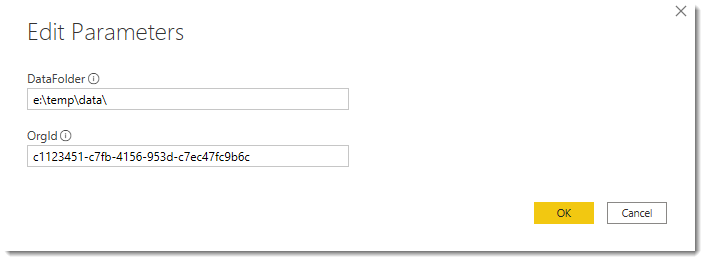Table of Contents
How to Use the PowerBI Template
The PowerBI template is provided as a starting point for Nexus users. It is configured to use the various data files out of the box. Some additional configuration is needed.
Download the Template
Save a copy of the template in case there is a need to restore it in the future. Store the template in a folder where the data files will be stored as well. If the data file(s) are found at the expected path, reloading of the data is easy.
Download the Data Files
Depending upon the role associated to your account, the available data files will be displayed in the list with their GET button. The files will be delivered via a link in an email. The data files are created in queues on the cloud and therefore, may require a small amount of time to be generated.
If the email is not received within an hour of the GET request, check that it is not being trapped in your email programs spam filter. Also, ensure that emails can be received from the ctcsoftware domain. This may require some assistance from your company's IT.
Click the download link in the email. Your computer's default internet browser will open and, depending on it's settings, will either prompt for download locations to save to or simply download to the default location (usually your “Downloads” folder).
Open PowerBI
The template was created using the free desktop version located on Microsoft's website. There are a lot of good resources online for learning how to use PowerBI.
NOTE: if your organization does not wish to use Projects/PAL or CMS, those tables should be removed from the template before configuration to prevent encountering errors.
Upon launching PowerBI, on the start screen, click “Open other reports”. Browse to the template downloaded previously to open it.
Configuring the Template
The template needs to be configured to point to your organization data. To do this:
- On the tool ribbon, click “Transform Data” then –> “Edit Parameters”

- Change the DataFolder value to match the path where the data files have been placed. Be sure that the path ends with a back slash ( \ )

- The name of the data files downloaded contains your Organization ID in a format like
c11234111-c8fb-4156-952d-c7ec47ff5b6c. This is the value you will put in the OrgId field - Click OK, then “Apply Changes” on the message band in PowerBI
- Save the PowerBI report.
Reloading New Data
The next time new data files are downloaded, simply replace the previous files in the configured location and click “Refresh” on the PowerBI tool ribbon next to “Transform Data”.